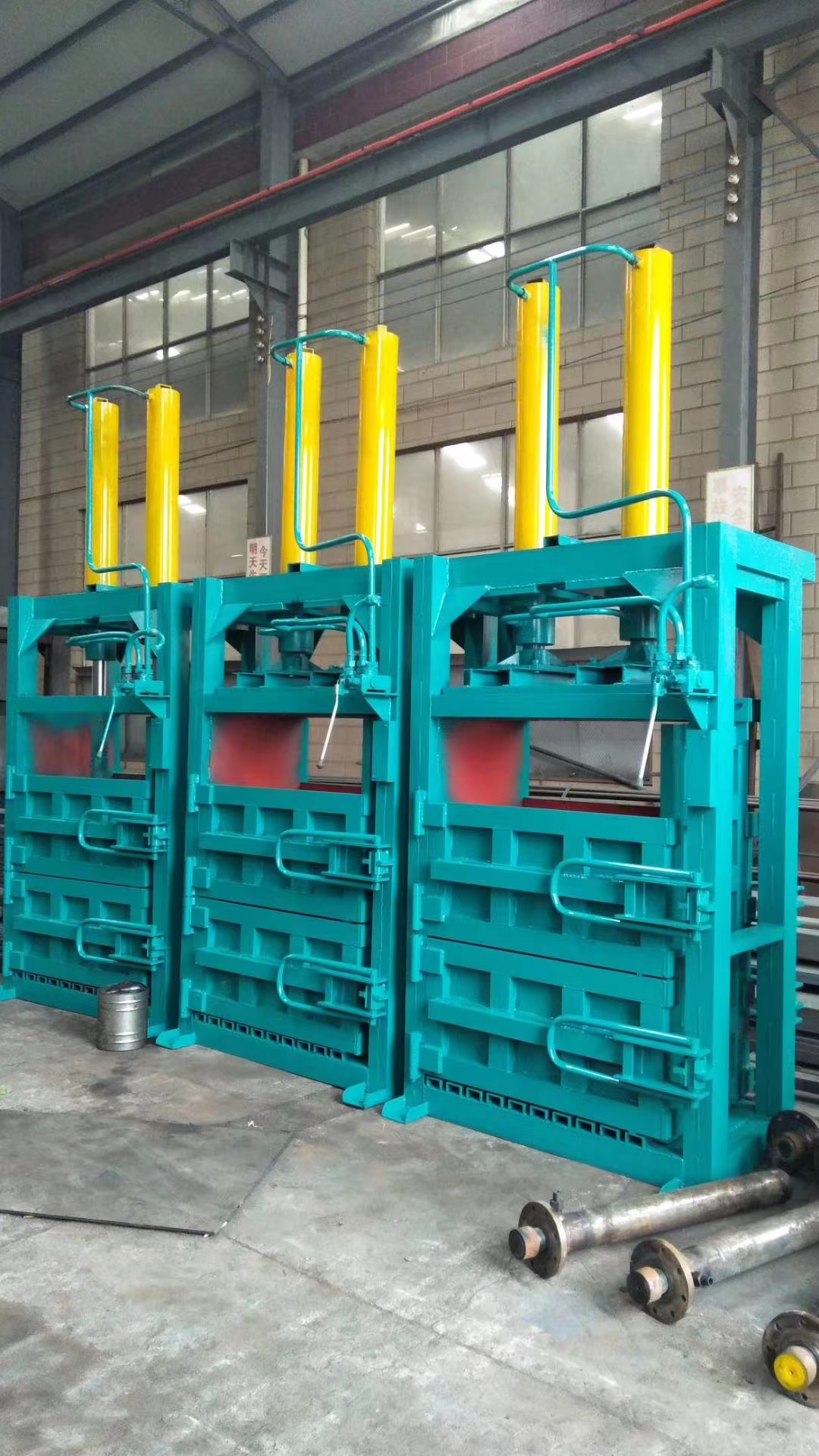Maximize Your Space and Save Costs with Our High-Efficiency Compaction Baler!
Date:2024-08-21
View: Point
Introduction
Baling presses are designed to reduce the volume of materials such as paper, cardboard, plastic, textiles, hay, straw, and other agricultural products by compacting them under high pressure. Once compressed, the material is bound together using twine, wire, or plastic straps to form a bale. The size and shape of the bale depend on the type of baling press and the specific requirements of the application.

![]()
Key Features:
- High Compression Force: Uses hydraulic or mechanical forces to compact materials into tightly bound bales.
- Manual or Automated Operation: Depending on the model, these machines can operate manually or fully automatically.
- Versatile Material Handling: Suitable for a variety of materials such as paper, cardboard, plastics, textiles, agricultural products like hay and straw, and other bulky but lightweight materials.
- Reduced Volume: Significantly reduces the volume of materials, making them easier to store and transport.
- Eco-Friendly: Helps in waste management and recycling efforts by compacting materials into manageable sizes.
- Customizable Designs: Can be customized according to the specific needs of the industry or application, such as varying bale sizes and shapes.
Applications:
- Agriculture: Used for baling hay, straw, and other agricultural products.
- Recycling: Commonly used in recycling centers to compact materials like paper, cardboard, and plastics.
- Waste Management: Used in waste management facilities to compact trash and other waste materials.
- Textile Industry: Used for compressing textile waste and surplus fabrics.
- Shipping and Logistics: Used in logistics operations to compact packaging materials and reduce shipping costs.
- Marine Industry: Used on ships and marine platforms to manage and compact waste generated onboard
Hydraulic Compaction Baler Working Principle:
- Feeding: The material to be compressed is placed into the compression chamber.
- Compression Process: A hydraulic system with a hydraulic pump forces hydraulic oil into the cylinders, driving pistons that apply pressure to the material. As the pressure increases, the material is compacted to the desired density and shape.
- Forming: Once the material has been compressed to the required density, it typically forms a dense block or bale. Some models may include a strapping system to further secure the compressed bale.
- Ejection: After the compression is completed, the pistons retract, and the compressed bale is ejected from the machine.
Pneumatic Compaction Baler Working Principle:
- Preparation: The strapping is fed through the machine and wrapped around the item to be packed.
- Tensioning: The pneumatic baler uses compressed air to drive a piston that pulls the strapping tight.
- Sealing: The ends of the strapping are heated and fused together, creating a secure joint.
- Cutting: The excess strapping is cut off.
- Release: The baler releases the pressure, completing one cycle of the packing process.
Automatic Compaction Baler Working Principle:
- Conveyor Belt Transport: Items are placed on a conveyor belt and transported to the packing position.
- Strapping Tensioning: The strapping is tightened around the item.
- Heat Sealing: The ends of the strapping are heated and fused together to form a secure connection.
- Cutting: The excess strapping is cut.
- Packing Completion: The packing process is completed, and the baler automatically prepares for the next cycle.
These different types of balers have their specific applications and technical advantages, but the common goal is to improve the efficiency of material compression for easier storage and transportation.
Zhongcheng Machinery Will Be There Whenever Wherever Whatever You Need
You Are Welcome to : phone call, Message, Wechat, Email& Seaching us, etc.
Email:
sales@zchmachinery.com
Whatsapp/Phone:
+8618738194110
hot Products
-
 Trommel screenTrommel screen, also known as drum screens, are widely used in various industries for sorting and separating materials.Get Quote
Trommel screenTrommel screen, also known as drum screens, are widely used in various industries for sorting and separating materials.Get Quote -
 Crop straw double shaft shreddApplications:Biomass Energy Production: Shredded straw can be used as a feedstock for bioenergy plants to produce electricity or heat.Livestock Feed: Reduced-si...Get Quote
Crop straw double shaft shreddApplications:Biomass Energy Production: Shredded straw can be used as a feedstock for bioenergy plants to produce electricity or heat.Livestock Feed: Reduced-si...Get Quote -
 Zhongcheng Air Drum SeparatorAir drum separators effectively separate lightweight materials (e.g., plastics, paper) from heavier materials (e.g., metals, glass). This high efficiency is cru...Get Quote
Zhongcheng Air Drum SeparatorAir drum separators effectively separate lightweight materials (e.g., plastics, paper) from heavier materials (e.g., metals, glass). This high efficiency is cru...Get Quote
relate news
-
2024-05-18Hydraulic Cone CrusherHydraulic Cone Crusher integrates machinery, hydraulic pressure, electrics, automation, and intelligent control, which can be used for medium crushing, fine cru...
-
2024-06-07Zhongcheng Air Drum Separator in MSWAir drum separators effectively separate lightweight materials (e.g., plastics, paper) from heavier materials (e.g., metals, glass). This high efficiency is cru...
-
2024-08-07Efficient Material Separation with Bounce ScreensThe ballistic separator is an important equipment with separation function designed for the sorting of inorganic particles in the coarsely crushed waste.
-
2023-01-12Vibrating ScreenVibrating screen is a mechanical device used to separate materials into different sizes and grades by vibrating them through a mesh or screen. This equipment is...
-
2024-05-18Mobile Jaw Crusher PlantMobile jaw crushing station is a novel rock crushing equipment, also known as mobile crushing station. The purpose of its design concept is to stand from the cu...



